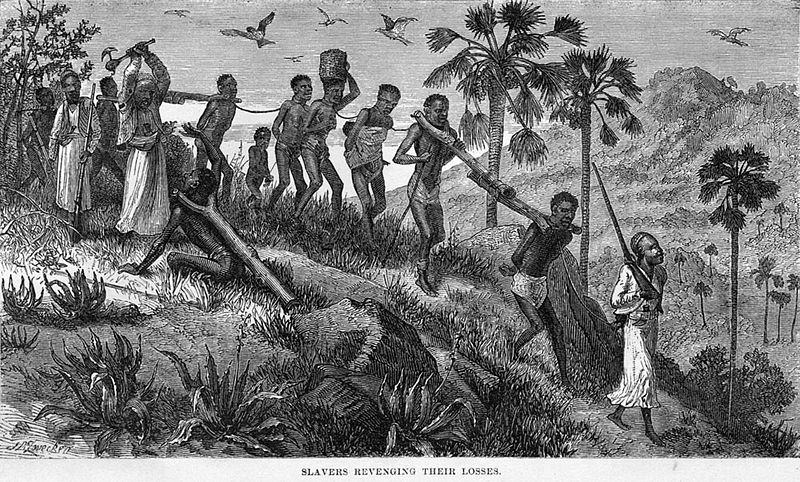فائل:Slaves ruvuma.jpg

هن پيش-نگاھ جي ماپ: 800*482 پڪزلس. ٻيا تحلل:320*193 پڪزلس | 640*385 پڪزلس | 1,000*602 پڪزلس
اصلوڪو فائيل (1,000 × 602 عڪسلون، فائيل سائيز: 286 KB، MIME ٽائيپ: image/jpeg)
فائيل جي سوانح
ڪنھن بہ تاريخ/وقت تي ٽڙڪ ڪري ڏسندا تہ ان وقت اهو فائيل ڪيئن هو.
| تاريخ/وقت | آڱوٺي ننھن | ماپَ | واپرائيندڙ | راءِ | |
|---|---|---|---|---|---|
| موجود نسخو | 02:36, 6 اپريل 2013 |  | 1,000 × 602 (286 KB) | Underlying lk | larger file |
| 16:36, 14 مارچ 2007 |  | 329 × 178 (23 KB) | Béka~commonswiki | {{Information |Description=Arab slave traders and their captives along the Ruvuma (Rovuma) river (in today's Tanzania and Mozambique) |Source=http://www.frontline.org.za/news/making_disciples_nations.htm; also in various non-Internet publications |Date=18 |
ڳنڍڻا
هن فائيل سان هيٺيان صفحا ڳنڍيل آهن.
گلوبل فائيل جو استعمال
ھيٺيون وڪيز بہ ھيءُ فائيل استعمال ڪن ٿيون:
- af.wikipedia.org تي استعمال
- ar.wikipedia.org تي استعمال
- arz.wikipedia.org تي استعمال
- ast.wikipedia.org تي استعمال
- azb.wikipedia.org تي استعمال
- be.wikipedia.org تي استعمال
- bn.wikipedia.org تي استعمال
- bs.wikipedia.org تي استعمال
- ca.wikipedia.org تي استعمال
- cs.wikipedia.org تي استعمال
- de.wikipedia.org تي استعمال
- diq.wikipedia.org تي استعمال
- el.wikipedia.org تي استعمال
- en.wikipedia.org تي استعمال
- Mozambique
- Slavery
- Death march
- Economic history of Africa
- History of slavery
- Slavery in Africa
- Thomas Jefferson and slavery
- 19th century
- Brussels Anti-Slavery Conference 1889–90
- Portal:Pan-Africanism/Selected history
- Portal:Pan-Africanism/Selected history/4
- Indian Ocean slave trade
- User:Caesarz870/sandbox3
- Medieval and early modern Africa
- es.wikipedia.org تي استعمال
- eu.wikipedia.org تي استعمال
- fi.wikipedia.org تي استعمال
- frr.wikipedia.org تي استعمال
- fr.wikipedia.org تي استعمال
- ga.wikipedia.org تي استعمال
- gd.wikipedia.org تي استعمال
- gl.wikipedia.org تي استعمال
- ha.wikipedia.org تي استعمال
- hy.wikipedia.org تي استعمال
ھن فائيل جو وڌيڪ گلوبل استعمال ڏسو.
